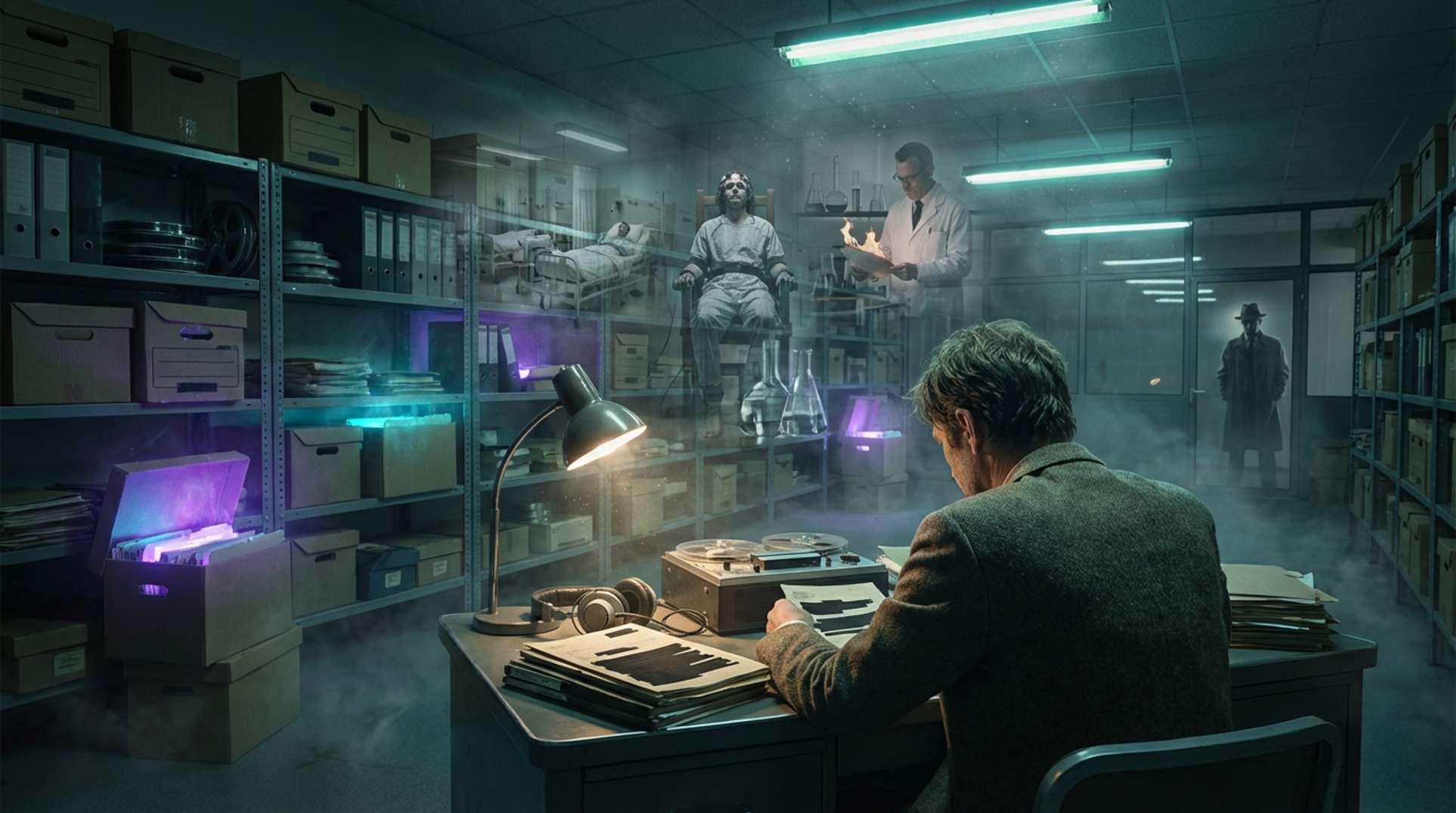Key Takeaways
- John Lisle, a Ph.D. historian of science at the University of Texas, has authored key books on U.S. intelligence, including “Project Mind Control: Sidney Gottlieb, the CIA, and the Tragedy of MKULTRA,” which draws on rare depositions to expose the program’s dark underbelly.
- Declassified documents and Senate hearings confirm MKULTRA operated from 1953 to the early 1960s, with fallout until 1973, encompassing 149 subprojects across over 80 institutions, involving illegal experiments on unwitting subjects under Sidney Gottlieb’s direction, who later destroyed most records.
- Survivor stories and patterns hint at a broader reach than surviving files show, with questions lingering about undisclosed victims, cultural impacts, and potential evolution into modern psychological operations.
A Historian in the CIA’s Long Shadow
Picture a quiet archive room at the University of Texas, where fluorescent lights hum over stacks of redacted memos and legal depositions. John Lisle, Ph.D. in history and now a professor of the history of science there, sifts through these fragments. His book, “Project Mind Control: Sidney Gottlieb, the CIA, and the Tragedy of MKULTRA,” pieces together what survived Sidney Gottlieb’s 1973 order to burn the files. These aren’t just dusty papers—they echo lives shattered by experiments hidden in plain sight. MKULTRA lingers not as ancient history, but as a thread pulling at today’s debates on secrecy and control.
What Survivors, Researchers, and Cultural Insiders Describe
Survivors from places like the Allan Memorial Institute in Canada recount experiences under Dr. Ewen Cameron that sound like science gone wrong. They describe “psychic driving”—endless audio loops paired with LSD and heavy electroshock, often without consent, leading to lasting memory loss and trauma. Many went in for standard psychiatric care and came out changed, their stories framing these as attempts to dismantle and reconstruct minds.
Beyond the documented cases, independent researchers spot MKULTRA’s echoes in wider culture. Figures like Ken Kesey, who joined early LSD trials, tie into arguments that the program influenced the psychedelic movement—either by design or accident. Others point to Candy Jones’s claims of being a programmed courier or Charles Manson’s exposure to similar techniques in prison. In forums and documentaries, people connect these dots to modern psyops: media influence and subtle interrogation methods that skip the drugs but build on the same foundations. Lisle’s work touches the core history but stops short of these broader links, leaving them as patterns reported by those tracking the shadows.
Timelines, Paper Trails, and What the Documents Actually Show
John Lisle stands on solid ground with his Ph.D. from the University of Texas and his role as a professor there. His books, including “The Dirty Tricks Department” and “Project Mind Control: Sidney Gottlieb, the CIA, and the Tragedy of MKULTRA,” pull from declassified sources. MKULTRA kicked off in 1953, peaked in the early 1960s, and wrapped up with file destruction in 1973. Senate hearings in 1977 revealed 149 subprojects aimed at mind alteration, often testing drugs on people without their knowledge.
The budget sat around $10 million then—about $87.5 million today. Over 80 institutions played roles, from universities to prisons, with at least 185 outside researchers involved, many unaware of the CIA connection. Gottlieb’s purge left holes, but Lisle’s use of later depositions fills some in, showing the program’s structure and reach.
| Metric | Details |
|---|---|
| Start/End Dates | 1953 to early 1960s (activities to 1973) |
| Number of Subprojects | At least 149 |
| Institutions Involved | Over 80 (30+ universities, hospitals, prisons, etc.) |
| Outside Researchers | At least 185 |
| Budget | $10 million (approx. $87.5 million adjusted) |
The Official Story, and the Readings That Refuse to Stay Inside It
According to CIA documents and Senate testimony, MKULTRA stemmed from Cold War paranoia about Soviet and Chinese brainwashing. They admit illegal tests on unwitting people but call it a contained effort, shut down long ago. Payouts like the $750,000 to Frank Olson’s family address specific tragedies, not a systemic issue.
Survivors and researchers push back. Gottlieb’s 1973 file burn looks like a cover-up, hiding victims who never knew they were subjects. Stories from Allan Memorial clash with the ‘limited’ label, describing intense efforts to break personalities. With 149 subprojects across 80+ sites and 185 researchers, the scale suggests more than the papers show. Some see techniques resurfacing in today’s interrogation and influence strategies. Lisle, grounded in mainstream history, uses fresh depositions to reveal deeper ties to institutions, echoing community doubts without buying every theory. It’s a clash of sparse admissions against fragments of experience and secrecy’s patterns.
The Gaps No One Can Honestly Close
Gottlieb’s destruction of files in 1973 means even insiders can’t map the full picture. Senate hearings noted 149 subprojects and 80 institutions, but details on victims and methods vanished. Cases like Allan Memorial surfaced through survivor persistence and lawsuits, hinting at others lost to time.
What hid in those burned papers? Could there be more victims with unexplained traumas? Partial evidence shows techniques like sensory deprivation feeding into modern manuals, but that’s documented continuity. Broader ideas—like programs morphing into cultural engineering—rest on community observations with thin trails. These voids aren’t accidents; they’re built-in, from choices made to erase the record.
Why MKULTRA Still Refuses to Stay Buried
MKULTRA stands as hard proof: a democracy ran mind-altering experiments on its own people, through trusted schools and hospitals. Lisle’s book, using unearthed depositions, spotlights Gottlieb and the human toll, sharpening the view of this hidden machine.
Officials say it’s done and dusted, but survivors’ accounts and destroyed files keep questions alive. It shapes talks on everything from interrogation to media ops, showing such programs can happen—and did. Digging further isn’t chasing ghosts; it’s arming ourselves to spot when boundaries blur again, under fresh labels or in subtler ways.
Frequently Asked Questions
John Lisle is a Ph.D. historian and professor at the University of Texas, author of books like “Project Mind Control” on MKULTRA. His research uses rare depositions to detail the program’s structure and impacts, bridging official history with deeper questions about secrecy and experiments.
Declassified documents and Senate hearings confirm 149 subprojects across over 80 institutions from 1953 to the 1960s, involving drug tests and behavioral modification on unwitting subjects. Sidney Gottlieb led it and destroyed most files in 1973, leaving gaps in the full record.
Survivors describe intense, non-consensual experiments like psychic driving with LSD and electroshock, leading to lasting trauma. Officials frame MKULTRA as limited Cold War research, but the file destruction and institutional scale raise doubts about minimized harms and hidden victims.
Patterns in modern interrogation and psyops manuals show echoes of MKULTRA methods like sensory deprivation. Community researchers suggest broader cultural impacts, though verifiable links are sparse due to destroyed records.
The 1973 destruction of files by Gottlieb erased much of the evidence, making full reconstructions impossible. This leaves open issues like unidentified victims and potential program evolutions, fueled by survivor testimonies and partial documents.




